Perceived value is a funny old thing.
Some manufacturers spend millions of pounds in advertising telling us, almost in vain, how good their vehicles are while others quietly get on with the job, spending little on grandiose self-trumpeting, and gain a great deal of kudos.
Take Land Rover for example.
Whether the Freelander 2 is a better vehicle than, say, the Nissan X-Trail or the BMW X3, is a moot point, but the fact of the matter is that when it comes to off-roaders, Land Rover is perceived to be king.
So when the new Freelander 2 was launched in November 2006, it didn’t take long for some influential commercial vehicle fleet buyers to say they’d like a few, but in LCV format.
The day has finally arrived when such a beast is available and looking at the Freelander 2 Commercial from the outside it’s not difficult to see why so many people want them.
Its exterior is chic and stylish, it’s very competent and best of all, it doesn’t look like a van.
Pull up at the Ritz in a run-of-the-mill LCV and you’ll find the doorman studiously gazing at some unseen object in the distance, hoping you’ll soon discover the tradesman’s entrance. In one of these, you’ll soon have them dashing over to invite you in.
The Freelander 2 Commercial is offered in two formats – S and XS (our test vehicle being the lower-specced) – retailing at £17,140 and £21,115 ex-VAT.
S versions include 16in alloy wheels with locking wheelnuts, electric heated door mirrors, five airbags, a volumetric alarm, a full height bulkhead with a mesh top half and a full length rubber mat in the loadspace.
 XS adds 17in 10-spoke alloys, cruise control, remote audio controls, cloth/leather seats, automatic climate control and rain-sensing wipers. Various options are available including bigger wheels, automatic transmission and metallic paint.
XS adds 17in 10-spoke alloys, cruise control, remote audio controls, cloth/leather seats, automatic climate control and rain-sensing wipers. Various options are available including bigger wheels, automatic transmission and metallic paint.
Payload is around 655kg (depending on how many extras are added) and load volume is 1.67 cubic metres.
Under the bonnet is a single offering – Land Rover’s 2.2-litre TD4 diesel engine offering 118bhp and a meaty 295lb-ft of torque, which will tow 2,000kg and return 35.8mpg on the combined cycle (auto 31.7mpg).
Behind the wheel
Looking at the list of standard goodies above (and we’ve only mentioned the main ones) it goes to show that if you want creature comforts, it’s always best to go for a van that started life as a car.
Few true LCVs will offer so much.

The Freelander is the ideal vehicle for those who don’t want an LCV but something that will impress the Joneses – my neighbour, for example, refused to believe it was a van until I opened the rear doors and showed him the loadfloor.
The rear windows are still made of glass but are darkened so you can’t see what’s inside.
The Freelander 2 is a quantum leap forward over the old model, which I must say I never really rated.
It looks superb, especially when clad in metallic paint like our test model, and its general fit and finish feels far superior to some of the contenders from Asia we are getting on the roads nowadays. (With new Asian owner Tata, it will be interesting to see how Land Rover develops).
In the front
The general build quality of this vehicle can be judged even before entering it.
The doors are solid and heavy and close with a satisfying snick in the way that only the best vehicles can.
Once inside, the cab exudes a quiet air of style and opulence (very unlike your average van) and the seats are big, firm and comfortable, with nice deep squabs.
As the steering wheel adjusts for rake and height, even tall specimens like me can find a comfortable driving position.
The aircon unit offers ‘his and hers’ dials so that one side of the van can be made a different temperature from the other and there are two cupholders in the centre console, along with big bins in both doors.
Meanwhile, two grab handles in the roof allow for stability when the going gets rough.
In the back
Although the load volume is only half that of your average hi-cube van such as the Citroën Berlingo, the Freelander offers a good square loadspace which is accessed at the back via a tailgate.
The floor is completely flat, which means that heavy loads can be slid in and out, and the rear portion lifts up to reveal the well for the full size spare.
As this van is basically a car, both rear doors can be used to slide cargo in the rear end and there are four load-lashing eyes and a full steel and mesh bulkhead to keep things secure.
On the road
Starting this van involves a rather curious combination of putting the key fob in a hole, depressing both the brake and clutch and then dabbing the ‘start’ button.
Why all this kerfuffle?
You tell me.
Once fired up though, the turbodiesel unit is surprisingly smooth and quiet and thanks to a great deal of padding, never intrudes into the serenity of the cab.
The clutch is a different matter – it’s as stiff as a northerly November gale and seems to come right out of a 1948 Defender.
You do get used to it in the end but it’s a bit of a shock at first.
The six gears snick into place nicely, but the power steering is a tad on the light side for me and doesn’t seem to give a lot of feel for what’s going on twixt steering wheel and road.
General ride and handling are little short of superb – suspension soft enough for everyday roads but hard enough to keep its head in the rough – and it’s while under way that you come to appreciate just how much of a gulf exists between top performers like this and some of the cheap imitations.
We didn’t manage to take our Freelander off-road during our test week but if reports from others are anything to go by, this vehicle will handle anything that the UK can throw at it – and more.
The vehicle is permanently in four-wheel drive mode, which obviates the need for a second gear lever, and there’s a button to be pressed on the centre console which automatically slows the vehicle down on steep hill descents.
Verdict
There are quite a few fleets out there that need a van which isn’t afraid to get its feet dirty, but want a vehicle that’s stylish and comfortable too. The Freelander fits this bill comfortably on both counts.
Fact file
Gross vehicle weight (kg): 2,505
Payload (kg): 655
Load volume (cu m): 1.67
Towing weight (kg): 2,000
Fuel economy (comb cycle): 35.8
CO2 emissions (g/km): 210
Price (ex-VAT): £17,140





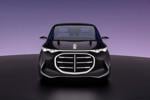



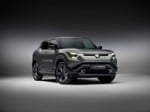


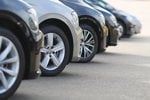

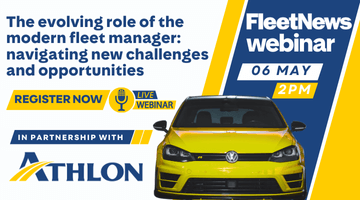
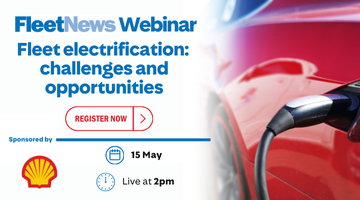
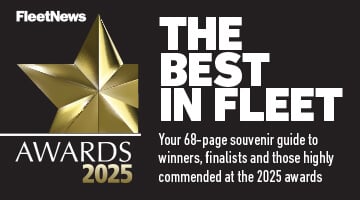

Ashley - 30/05/2013 23:30
I e been told that these are not good for towing horses? I like this version as its just me n dogs so I don't need seats, but can it cope towing 2horses in trailer? Also Eco friendly for every day use?